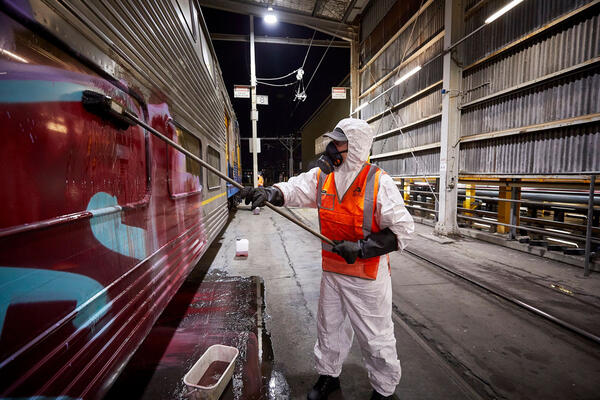
Public transport graffiti: Understanding and prevention research
Updating our understanding of graffiti and graffiti prevention with a focus on transport impacts.
Research designed to update our understanding of graffiti and graffiti prevention including how graffiti perpetrators operate, their motivations and methods, and identify the range of interventions that work to prevent it impacting our transport network and infrastructure. This multi-jurisdictional project is being undertaken by Swinburne University of Technology.
Background
Graffiti is an indicator of social disorder and negatively affects public transport patronage. Trends in graffiti offences have changed, requiring an update on the issue which will be gathered from experts nationally.
Graffiti and graffiti prevention are a complex issue with impacts and interventions nationally relevant, due to the boundaries operating across police and public transport agencies. With the help of industry experts, including public transport specialists (Australian and international), state police experts, members and affiliates of the Federal Graffiti Forum, local government representatives, and companies with large landholdings, this research will update our understanding of the range of interventions that could be used to manage it.
Objectives
This project aims to meet the following objectives:
- Understand the public perception of graffiti on public transport and how it differs by location and context;
- Determine what is the current state of graffiti and how it has changed in recent times; and
- Determine the best practices of graffiti management and prevention and the appropriate contexts for their implementation.
Further updates will be provided as this project progresses.
This research is being delivered in partnership with iMOVE CRC and supported by the Cooperative Research Centres program, an Australian Government initiative.
